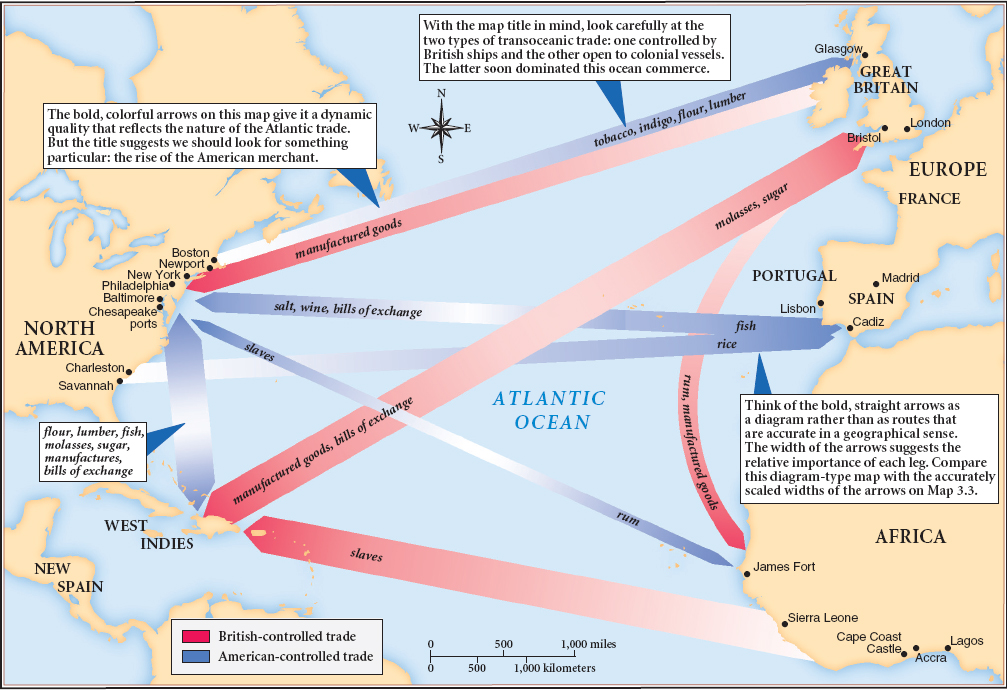America’s History: Printed Page 103
America: A Concise History: Printed Page 89
America’s History: Value Edition: Printed Page 87
The Urban Economy
The West Indian trade created the first American merchant fortunes and the first urban industries. Merchants in Boston, Newport, Providence, Philadelphia, and New York invested their profits in new ships; some set up manufacturing enterprises, including twenty-six refineries that processed raw sugar into finished loaves. Mainland distilleries turned West Indian molasses into rum, producing more than 2.5 million gallons in Massachusetts alone by the 1770s. Merchants in Salem, Marblehead, and smaller New England ports built a major fishing industry by selling salted mackerel and cod to the sugar islands and to southern Europe. Baltimore merchants transformed their town into a major port by developing a bustling export business in wheat, while traders in Charleston shipped deerskins, indigo, and rice to European markets (Map 3.4).

As transatlantic commerce expanded — from five hundred voyages a year in the 1680s to fifteen hundred annually in the 1730s — American port cities grew in size and complexity. By 1750, the populations of Newport and Charleston were nearly 10,000; Boston had 15,000 residents; and New York had almost 18,000. The largest port was Philadelphia, whose population by 1776 had reached 30,000, the size of a large European provincial city. Smaller coastal towns emerged as centers of the lumber and shipbuilding industries. Seventy sawmills lined the Piscataqua River in New Hampshire, providing low-cost wood for homes, warehouses, and especially shipbuilding. Hundreds of shipwrights turned out oceangoing vessels, while other artisans made ropes, sails, and metal fittings for the new fleet. By the 1770s, colonial-built ships made up one-third of the British merchant fleet.
The South Atlantic System extended far into the interior. A fleet of small vessels sailed back and forth on the Hudson and Delaware rivers, delivering cargoes of European manufactures and picking up barrels of flour and wheat to carry to New York and Philadelphia for export to the West Indies and Europe. By the 1750s, hundreds of professional teamsters in Maryland were transporting 370,000 bushels of wheat and corn and 16,000 barrels of flour to urban markets each year — more than 10,000 wagon trips. To service this traffic, entrepreneurs and artisans set up taverns, horse stables, and barrel-making shops in towns along the wagon roads. Lancaster (the town that hosted the Iroquois conference described in the chapter opening), in a prosperous wheat-growing area of Pennsylvania, boasted more than 200 German and English artisans and a dozen merchants.
EXPLAIN CONSEQUENCES
Question
How did the rise of the South Atlantic System impact economic development in the northern colonies?